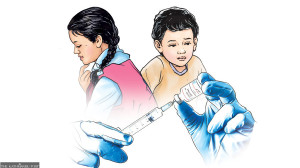National
Woman swept away in pre-monsoon flood. Experts call it a wake-up call for preparedness
But the disaster authority is still waiting for the monsoon forecast to begin its response and preparedness plan.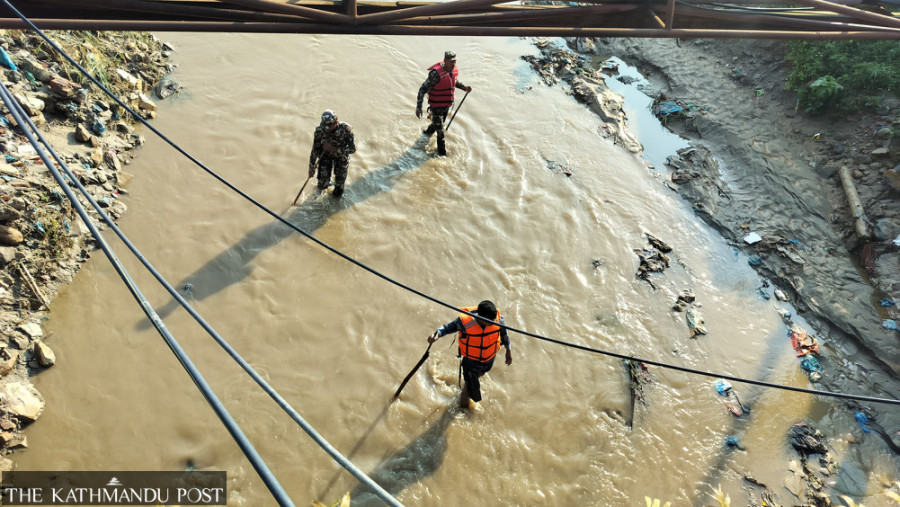
Arjun Poudel
The whereabouts of a woman swept away by a swollen stream in Panauti Municipality of Kavrepalanchok on Monday remains unknown as of Tuesday evening.
A flood triggered by moderate rainfall of 41 mm not only swept away the woman, who was returning home from work in her field, but also roads and drinking water pipelines in various places.
“Death resulting from a flood in the pre-monsoon season is completely new to us,” said Dr Megnath Dhimal, a chief research officer at Nepal Health Research Council. “Extreme weather events including floods, landslides, inundation, and dengue outbreaks are now being reported before the onset of the monsoon season, which is a matter of serious concern.”
Along with Kavrepalanchok, several other districts across the country have already witnessed flooding and landslides triggered by moderate to heavy rainfall in the ongoing pre-monsoon season. Experts say this is a wake-up call for preparedness against looming disasters.
Every year, hundreds of people die in monsoon-related disasters—landslides, floods, thunderstorms, snakebites and several other communicable diseases.
Despite changing rainfall patterns caused by climate change—extreme rainfall over short periods to prolonged dry spells—wreaking havoc across the country over the past decade and a half, affecting thousands of people and threatening livelihoods, the working style of the agencies concerned has not changed significantly, according to experts.
Meteorologists say that moderate rainfall alone should not trigger flooding, and the flooding in Kavrepalchowk and several other places, including Samakhushi in Kathmandu, is a matter of study, which has not started yet.
“Isolated moderate rainfall of yesterday [Monday] in Roshi of Kavrepalanchok and in Samakhushi area a few days ago triggered flooding,” said David Dhakal, a meteorologist at the Meteorological Forecasting Division under the Department of Hydrology and Meteorology. “This is a matter of detailed study.”
A few days ago, the swollen Bishnumati River inundated the river corridors and affected the capital city's traffic.
Meanwhile, around 1,000 people from 57 districts, including Kathmandu, Bhaktapur, and Lalitpur, have already tested positive for the dengue virus since January this year. As dengue became endemic in Nepal years ago, meaning people get infected throughout the year, health officials no longer classify it as a seasonal outbreak.
“Start preparation, strengthen health facilities, and make people aware of the risk. These steps can save hundreds of lives,” said Dhimal. “Complacency in the face of serious risks would be too costly for people and the country.”
This year, Nepal is likely to witness above-normal monsoon rains for the second consecutive year, according to a regional consensus among South Asian meteorologists. Above-normal rains could spell more disasters—flooding in the plains and flash floods and landslides in the hills and mountainous regions.
However, the National Disaster Risk Reduction and Management Authority, under the Ministry of Home Affairs, which coordinates among relevant agencies for disaster response, is still waiting for the monsoon forecast from the Department of Hydrology and Meteorology to prepare a disaster preparedness plan.
“Without the forecast by the Department of Hydrology and Meteorology, our preparedness plan will not be complete,” said Ram Bahadur KC, spokesperson of the authority. “Preparations will start accordingly once the risk assessment is available.”
Disaster experts warn that the lackadaisical approach of authorities is deadlier than the disaster itself. They urge the authorities concerned to prepare for protecting the population from possible risks, prepare for the worst-case scenario, rescue the victims, and rehabilitate them.
“Negligence is deadlier than the disasters themselves,” said Dr Gangalal Tuladhar, a disaster expert. “Risks can be minimised through preparedness, which costs far less than disaster response. But our focus remains on response only.”
The monsoon season generally begins on June 13 in Nepal.
Tuladhar, also a former minister for education, said that the government still has one month to prepare for the worst-case scenario, and many things can be done in this one-month period.
“We could have prevented the loss of lives in the Jhyaple Khola and Simaltal landslides had we taken cautions and activated our agencies concerned in time,” said Tuladhar. “Due to a lack of preparedness, we reach the incident sites without preparations.”
Experts suggest stockpiling food, medicines, and relief materials at regional and district levels, working for better coordination among agencies concerned under all three tiers of government, and creating basket funds while responding to disaster-related incidents. They say the responsibilities of the authorities do not end with the immediate disaster response, as the risk of disease outbreaks increases afterwards.
Nepal is one of the world’s most vulnerable countries to the climate crisis and has witnessed extreme weather events over the past decade and a half.
Evidence suggests that the maximum temperature in Nepal is rising at a greater rate (0.056 degrees Celsius per year) than the global average of 0.03 degrees Celsius per year.
Experts say extreme weather events—excess rainfall in a short period, continuous rains for several days after the monsoon, dry spells, droughts, below-average precipitation, and above-normal winter temperatures—have become more frequent in Nepal.
The monsoon, which usually runs from June 13 to September 23 and delivers around 80 percent of the country’s total annual rainfall over 105 days, has in recent years lingered longer than usual.




 10.12°C Kathmandu
10.12°C Kathmandu


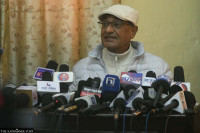





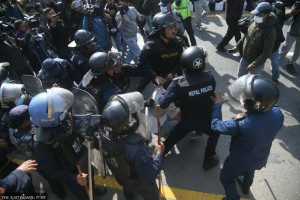
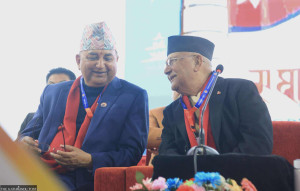



%20(1).jpg&w=300&height=200)

